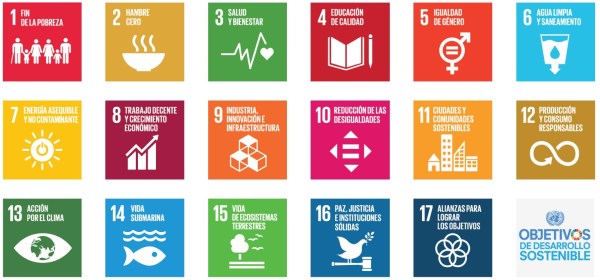The Sustainable Development Goals of the UN’s 2030 Agenda have a number of characteristics common to all 17 SDGs.
In addition to indicators against which to measure their achievement, let’s look at what else these goals have in common.
Based on sustainable development… but what exactly is this term?
Before going into other considerations and characteristics common to the SDGs, it is necessary to explain what exactly is meant by the term sustainable development.
The UN itself defines this concept as development that is ‘capable of meeting the needs of the present without compromising the ability of future generations to meet their own needs’.
Sustainable development requires the harmonisation of three interrelated elements: environmental protection, social inclusion and economic growth.
The United Nations, in addition to placing the eradication of poverty as an SDG, also considers it essential to achieve sustainable development.
Universality
One of the common characteristics of the Sustainable Development Goals of the 2030 Agenda is their universality, since they concern all UN member states.
Although to varying degrees, since some countries may need to receive assistance from others in certain areas, all the world’s states are concerned by a series of challenges that may be either joint or individual.
This feature of universality distinguishes the SDGs from their predecessors, the Millennium Development Goals, which were aimed exclusively at developing countries.
Legally non-binding
Another feature of the SDGs is that they are not legally binding, although countries have been able to adopt them as their own, including by establishing national frameworks for their achievement.
The potential success of these goals lies, however, in the policies, programmes and plans implemented by the different administrations.
Countries also have a responsibility to review and monitor progress towards both the goals and targets.
Transformation
Each with its own particularities depending on what each of them is focused on, another common feature of the SDGs is that they are transformative, as their definition implied a paradigm shift in how to move towards a more sustainable world.
The transformative vision of these 17 goals encompasses not only the environmental perspective but also the economic and social perspectives, providing societies with the tools to move towards a more sustainable world that is centred on the planet and people, based on both their dignity and the fulfilment of human rights.
Interrelatedness
Another common feature of the SDGs may seem obvious, but all 17 are interrelated and interconnected.
This cross-interdependence between them can also generate multiplier effects on the path of moving towards their achievement.
In short: the fact that the objectives are integrated implies that actions carried out in one specific area will affect the fulfilment of other areas.
Transversality between different levels of society
The seventeenth and last of the SDGs not only alludes to universality, which we discussed earlier, as it ‘requires the involvement of all countries, both developed and developing’.
This cross-cutting nature between states of different economic status and their different administrations also involves the private sector and civil society, and encourages individuals to create groups in their communities to promote the implementation of the SDGs or to urge the corresponding administrations to collaborate with companies.
Telefónica and the SDGs
With the aim of promoting global and accessible connectivity, Telefónica is particularly focused on SDG 9, with a focus on reducing the digital divide by promoting digital inclusion projects.
However, it is also worth remembering that digital solutions are necessary to achieve more than half of the targets set out in the Sustainable Development Goals, for which the company is committed to building a greener future, helping society to prosper and leading by example.









